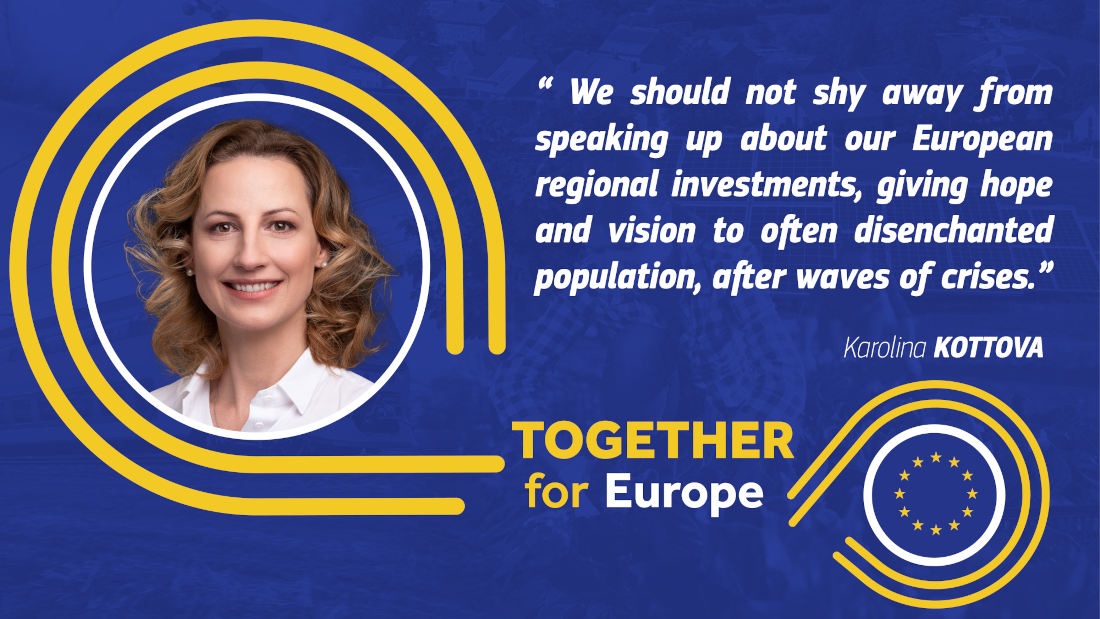
- Could you tell us a bit about the network and your main takeaways from the meeting?
The network is a lively, vibrant community of over 1 200 communicators from all the EU Member States and the Commission. We are from different regions and countries with different experiences and backgrounds, but we all share the same objective: to ensure that Europeans know how EU funds make their lives better. The Inform EU network meets twice a year in different places across Europe and focuses on topical communication questions. In Evora, we were 300 participants and the programme focused on strategic communication. We heard concrete examples from Member States, learned good tips on engaging citizens and visited some successful projects in the Alentejo region. Overall, satisfaction was high among participants and we could sense how important it is to meet in person and network over a cup of coffee.
- What do you think about the new, enlarged Inform EU network?
Including communication experts from other European funds clearly made the group larger and more heterogeneous. At the same time, linking communication about EU investments in different fields such as employment, home affairs, maritime affairs and areas covered by the Recovery and Resilience Fund makes sense, because people do not distinguish where EU funding comes from. For them, what matters is the contribution that the EU makes where they live.
- You arrived at DG Regio in May 2022 as Head of the Communication Unit. Before that you were Deputy Head of Representation and Head of Political Section at the Commission Representation in Czech Republic. Could you give us some examples of local communication actions that worked well and why they were successful?
Czechs are a rather eurosceptical nation, which makes it difficult to sell them our usual EU narratives. We had to be inventive and play with local sensitivities, and use humour. Perhaps the biggest success was a series of videos which promoted the EU freedoms, but made fun of traditional beliefs and prejudices. They were shown between movie trailers in multiplex cinemas across the country and had massive reach as people shared them on social media. Another good example was a national Regiostar competition among towns and villages on cohesion-funded projects. An online initiative of a Czech association of towns and cities and the Commission Representation. Over 100 000 citizens voted and prizes were awarded at the Prague Castle. The success was due to local ownership and mobilisation of citizens by their town halls.
- What are the biggest challenges in communicating EU funds in the current programming period?
I can see one internal and one external challenge. Internally, on the EU side, we should try to overcome rivalry among institutions and among different services on who contributes more and is more visible. It fragments our communication efforts. Luckily, we are on a good track, for example with our CPR funds and new visibility rules focusing on promoting just the EU emblem. Externally, it’s a recurrent challenge that the EU faces in its Member States. How to make sure that the governments – national, regional or local – consistently mention EU contributions to important projects. It’s too tempting to take full credit for a new railway station, reconstructed theatre or a new highway, especially in election campaigns. And citizens end up not being aware that “Europe is closer than I thought” as one young participant of our Europe in the School campaigns recently said.
- What are REGIO’s strategic communication priorities for the next year?
We have two major communication opportunities. First, 2023 is a year when many important projects from the 2014-2020 programming period will be finalised. We should join forces with Member States, use all our communication networks, creativity and channels to make the world know what has been achieved over the previous seven years. Second, 2023 is when we start implementing projects from the current programming period, 2021-2027, after the marathon adoption of all programmes in 2022. This means that we have the plan of where we want to be in 2027. We should not shy away from speaking up about it, giving hope and vision to an often disenchanted European population, after waves of crises. This is particularly relevant for those regions that we classify as JTF territories, where economic and social challenges are even more accentuated. Here we have special instruments and plans, which we will